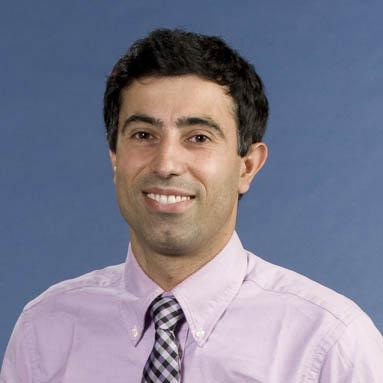
SDG 9: Industry, Innovation, and Infrastructure - Build resilient infrastructure, promote inclusive and sustainable industrialization and foster innovation


My research activities in the Department of Civil and Environmental Engineering are in mechanics, materials, and structures. At WPI, my favorite teaching aspect is working one-on-one with graduate and undergraduate students on research projects. I like to excite students’ curiosity toward discoveries and creative scientific advancements. In our research group, we focus on the fundamental principles that control the behavior of materials in engineering and biology at multiple scales. I am particularly interested in the bioinspired design of materials and structures. In this field, studying biological materials leads to the design of high-performance materials and structures. For example, we have created a new paradigm in self-healing concrete using an enzymatic mechanism. Using the same mechanism, we have now produced a Carbon-Negative Enzymatic Construction Material (ECM), which sequesters 18 lbs of CO2 per cubic yard in comparison to concrete which emits around 700 lbs of CO2 per cubic yard. ECM also holds the record in compressive strength as a carbon-negative alternative structural material at around 15 MPa. I encourage you to see the details of our research activities on my group's website.
SDG 9: Industry, Innovation, and Infrastructure - Build resilient infrastructure, promote inclusive and sustainable industrialization and foster innovation

SDG 11: Sustainable Cities and Communities - Make cities and human settlements inclusive, safe, resilient and sustainable

Mixed mode fracture of dental interfaces N Rahbar, Y Yang, W Soboyejo Materials Science and Engineering: A 488 (1), 381-388
Fibronectin adsorption on functionalized electrospun polycaprolactone scaffolds: Experimental and molecular dynamics studies S Regis, S Youssefian, M Jassal, MD Phaneuf, N Rahbar, S Bhowmick Journal of Biomedical Materials Research Part A 102 (6), 1697-1706
Contact behavior of soft spherical tactile sensors S Youssefian, N Rahbar, E Torres-Jara IEEE Sensors Journal 14 (5), 1435-1442
Nano-scale fracture toughness and behavior of graphene/epoxy interface H Salahshoor, N Rahbar Journal of Applied Physics 112 (2), 023510
Effects of silane on the interfacial fracture of a parylene film over a stainless steel substrate T Tan, J Meng, N Rahbar, H Li, G Papandreou, CA Maryanoff, ... Materials Science and Engineering: C 32 (3), 550-557
An equivalent driving force model for crack growth prediction under different stress ratios S Kwofie, N Rahbar International Journal of Fatigue 33 (9), 1199-1204